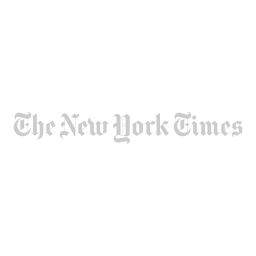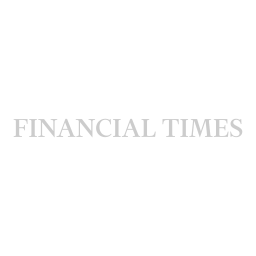Note: This post is a recent one that I wrote in August, but I wanted to republish it specifically this week as people are heading into their final days of preparation and strategic goal-setting for 2017 before everyone closes up shop for the holidays. As you finalize budgets and think about where you want to focus your energy this coming year, it's good to remember the math and other tradeoffs that go into saying yes to doing work for free – whether that's providing product for a styled shoot, taking headshots for colleagues, creating a floral arrangement for a planner's morning TV spot, speaking at a workshop, or any number of opportunities that request you to comp your time and talents.
I am okay with working for free, when it is in your best interest. I don't believe that "just say no to working for free" is always the best plan of action. Some amazing opportunities can come out of saying yes when a direct paycheck isn't involved.
Most of the people who will ask you to work for free — whether it involves taking a headshot for them, speaking at their event, or making a flower arrangement for their mother's birthday dinner — aren't trying to take advantage of you. But, more often than not, the scope of the project increases, the expected benefit never materializes, and you're left feeling like you did a lot of work for nothing more than a handwritten thank you note, if that. When deciding whether or not to do a project for free, I have a few guidelines that I often advise clients to take into consideration:
- Opportunities should align with your values and be some part of a trade/barter. Free is never actually free.
- Free can be strategic, so trust your gut, but ALWAYS do the math. The trade/barter should be dollar for dollar, or pretty close to it.
- You should have an agreement in writing, just as you would for paid work. This can be informal, but at the very least be written in an email.
Let's look at each of these:
1. OPPORTUNITIES SHOULD ALIGN WITH YOUR VALUES AND BE SOME PART OF A TRADE/BARTER. FREE IS NEVER REALLY FREE.
In the United States, using volunteers for a for-profit business is illegal. I'm not speaking of interns, but friends and family who may help you out from time to time, who you don't pay to do so. The IRS doesn't ban this for altruistic reasons, it's all about money: if you're not paying volunteers, that's payroll tax, etc that they don't get to collect.
This means that if you're asked to provide services for free, you need to have some sort of trade/barter in place. Photographers often provide professional headshots for wedding planners with the trade agreement being that the planner sends the photographer a paying client in the next few months. (You can also just decide that the headshots are part of your marketing or networking budget and not expect anything in return, but that's another post altogether. We're going to focus on the trade aspect for this one.)
Saying yes to something, by definition, means saying no to something else. Getting clear on your values will help you say yes or no to opportunities from a place of JOMO (joy of missing out) rather than FOMO (fear of missing out). Too many people trade based on FOMO, while forgetting that nothing is really free. No matter what else it costs, it always costs your time: time away from your family and soccer games and dinners together, time away from your community and planting deeper roots with the people who are physically there when it counts, time away from your desk when you could be working on revenue-generating projects. There's not necessarily JOMO when missing a soccer game, but it's a little more palatable when you know the business that results from a trade will allow you to take your family on a fun vacation over Spring Break next year. The time you give up needs to be worth it to you, and what's worth it to you may look different than it does to someone else.
2. FREE CAN BE STRATEGIC, SO TRUST YOUR GUT, BUT ALWAYS DO THE MATH. THE TRADE/BARTER SHOULD BE DOLLAR FOR DOLLAR, OR CLOSE TO IT.
A good trade/barter deal will benefit both parties involved. The dollar amount of the trade you get in return should be roughly equal to the dollar amount of the product or services you're providing.
For example, if you're providing $30,000 in florals for a conference, can you reasonably expect to get $30,000 in business from the attendees who will see your work and then refer you? Or, let's say the price to attend the conference is $2500. Will you be comped twelve conference registrations in order to match the $30,000 in costs you're providing for free? If not, is it worth it to you?
Legal aspects aside, anyone who's worked in a creative industry for more than twenty minutes will tell you that trading services or products based on an ego boost alone is not worth it. Giant corporations who sponsor events like the Olympics always run the numbers and forecast ROI before spending the money. You should, too.
3. YOU SHOULD HAVE AN AGREEMENT IN WRITING, JUST AS YOU WOULD FOR PAID WORK. THIS CAN BE INFORMAL, BUT AT THE VERY LEAST WRITTEN IN AN EMAIL.
There's a quote that I love and refer to often: "You don't get what you deserve, you get what you negotiate." Scope creep on projects that are done for trade is all too common, and having even an informal agreement in writing can help avoid bruised egos and hurt feelings later on. At the very least, what you have in writing should include what each of you is getting out of the barter. Ideally, it will also have numbers: the amount you normally charge for styling a magazine photo shoot, and the amount in comped ad space the magazine is providing in return. An ounce of prevention is worth a pound of cure. Avoid future business heartache (or heartburn) and write things down.
Doing things for free via a trade can be a strategic way to grow your business and leverage opportunities that may not have been open to you before. Make sure you're evaluating the requests you receive based on what they're actually worth to you, so that you can protect the future of your business and your professional relationships.
Originally published August 2016















